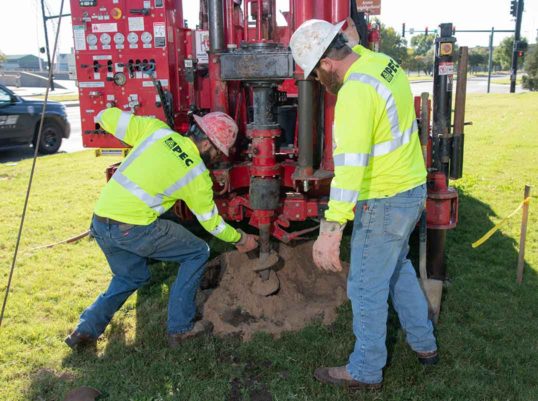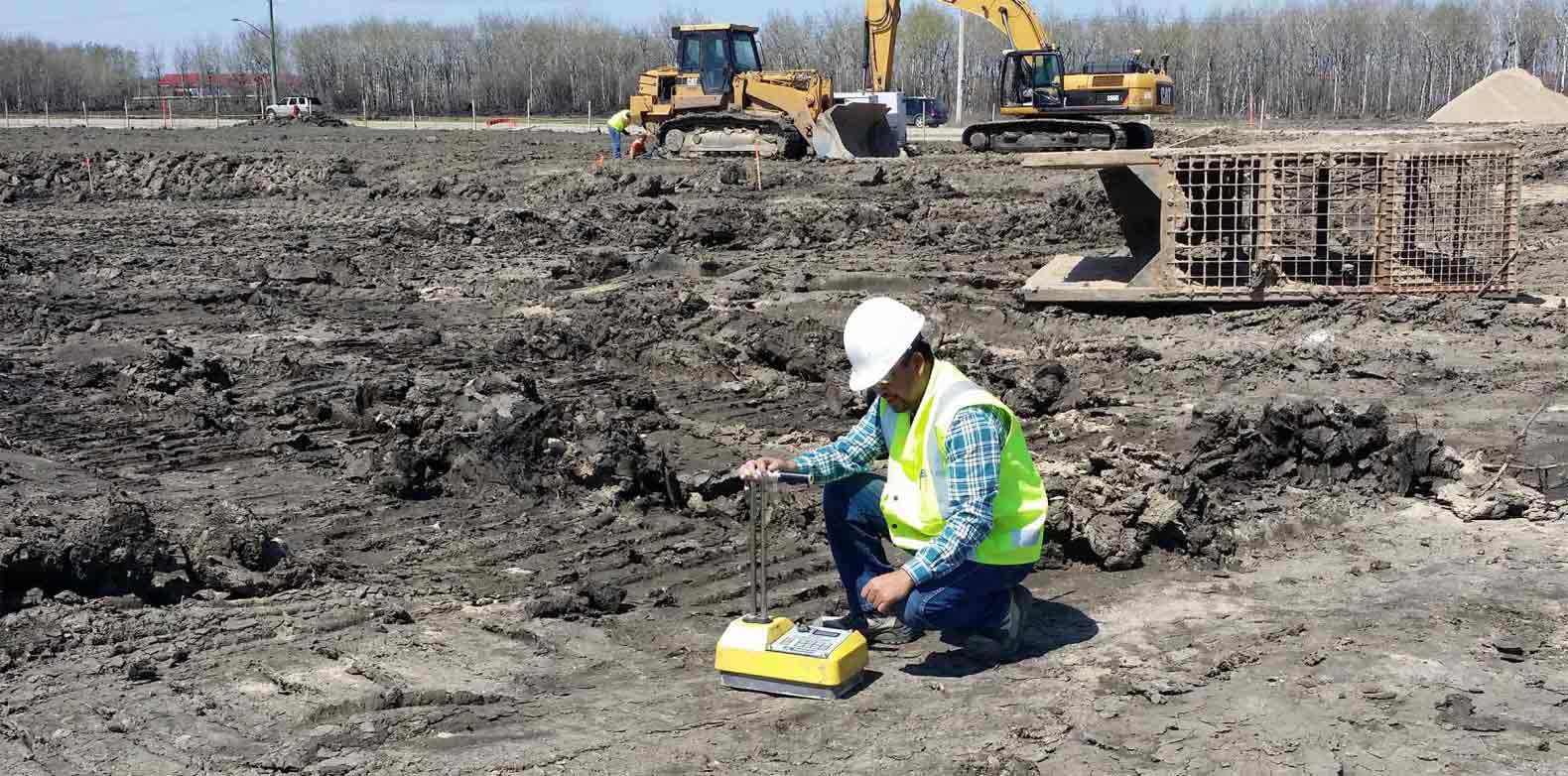Top Geotechnical Engineers for Cutting-Edge Dirt Evaluation and Foundation Design
Wiki Article
The Interdisciplinary Approaches in the Geotechnical Market: Linking the Gap Between Engineering, Geology, and Environmental Scientific Research for Optimal Job End Results
The integration of engineering, geology, and environmental scientific research within the geotechnical sector is not merely helpful; it is important for accomplishing optimal task outcomes. This interdisciplinary cooperation promotes a comprehensive understanding of facility site conditions, permitting ingenious options to arise. By examining crucial functions and successful instance researches, we can reveal the vibrant interplay that drives task success. Nevertheless, challenges continue to be in properly managing these multidisciplinary initiatives, elevating inquiries about potential developments and future patterns. What approaches might emerge to facilitate this essential partnership and enhance the efficiency of geotechnical methods?Relevance of Interdisciplinary Partnership
The importance of interdisciplinary partnership in the geotechnical market can not be overstated. Efficient geotechnical tasks call for the combination of diverse proficiency from different areas, consisting of design, geology, and ecological science. This partnership makes certain that all aspects of a project are thought about, causing thorough solutions that resolve complex difficulties.Interdisciplinary partnership fosters innovation by making it possible for specialists to share insights and methodologies that might not be apparent when working in isolation (tailings engineer). By leveraging the toughness of several disciplines, groups can recognize prospective risks, maximize style processes, and enhance the sustainability of geotechnical projects. Such partnership advertises an all natural understanding of site-specific conditions, which is essential for accurate evaluation and decision-making.
The complexity of geotechnical jobs necessitates a collaborated technique to problem-solving. Ultimately, interdisciplinary cooperation is important for progressing finest methods and achieving quality in the geotechnical industry.
Secret Functions of Each Self-control
Collaboration amongst numerous techniques is not simply advantageous; it is crucial for the effective implementation of geotechnical tasks. Each technique-- engineering, geology, and ecological scientific research-- plays a distinctive yet interconnected function that adds to predict efficacy and sustainability.Geotechnical designers are mostly in charge of making foundations and making certain architectural stability. They assess soil and rock residential properties to examine load-bearing capacities, supplying essential information for secure construction practices. Their experience makes it possible for the formula of ingenious solutions to complex obstacles.

Environmental scientists examine the possible impacts of building on environments and water sources. They conduct environmental assessments and develop mitigation approaches to decrease damaging effects. By incorporating eco-friendly considerations, they guarantee conformity with guidelines and promote sustainability throughout the project lifecycle.
Situation Research Studies of Successful Integration
Effective assimilation of geotechnical techniques can be exhibited via different situation studies that highlight the efficiency of teamwork in attending to complicated design obstacles. One noteworthy example is the building and construction of the Hong Kong-- Zhuhai-- Macau Bridge, where a collaborative method involving geotechnical design, geology, and ecological science consulting engineer was vital. Engineers and geologists functioned in unison to examine the seabed conditions and optimize the foundation design, making sure security and minimizing ecological effect.An additional impactful situation is the enhancement of slope stability in the San Francisco Bay Location, where an interdisciplinary team integrated geotechnical analysis with ecological evaluations. By incorporating hydrological studies and geological surveys, the group efficiently determined prospective landslide risks and executed effective mitigation actions, boosting security and sustainability.
Moreover, the redevelopment of Brownfield sites often requires a multidisciplinary technique. In one situation in Chicago, collaboration amongst geotechnical designers, ecological scientists, and urban coordinators resulted in the effective remediation of polluted soil, permitting the secure change of the website right into an area park. These study show that interdisciplinary collaboration not only addresses technological challenges however likewise fosters cutting-edge solutions that profit both tasks and areas.
Difficulties in Multidisciplinary Projects

Additionally, working with schedules and process among various teams can be troublesome, especially when each discipline has special job turning points and deliverables. This imbalance can cause hold-ups and boosted costs. The obstacle of resource appropriation additionally looms huge; making sure that specific proficiency is offered at essential points requires mindful preparation and insight.
Lastly, regulative compliance presents one more significant obstacle. Each discipline might face various regulative structures, and straightening these demands to satisfy task objectives can be time-consuming and complex. Dealing with these challenges necessitates strong leadership and effective interaction strategies to foster collaboration and make certain that multidisciplinary teams function cohesively in the direction of shared goals.
Future Trends in Geotechnical Practices
As the geotechnical market develops, emerging trends are improving methods to deal with the difficulties faced in multidisciplinary jobs - tailings engineer. One substantial pattern is the increased integration of sophisticated technologies, such as artificial knowledge and maker knowing, right into geotechnical analysis and layout. These innovations improve predictive modeling and threat analysis, allowing designers to make more informed decisions throughout the job lifecycle
Moreover, the fostering of digital doubles and real-time monitoring systems is ending up being much more widespread. These tools assist in recurring evaluation of dirt problems and architectural performance, allowing for timely treatments when problems occur.
Conclusion
In conclusion, the combination of engineering, geology, and ecological science is crucial for attaining optimal outcomes in the geotechnical market. Effective instance researches illustrate the advantages of this approach, while acknowledging the difficulties faced in multidisciplinary projects.The integration of engineering, geology, and ecological science within the geotechnical market is not simply helpful; it is essential for achieving optimum task results. Efficient geotechnical jobs call for the assimilation of diverse knowledge from various areas, consisting of engineering, geology, and ecological science.Browsing the intricacies of multidisciplinary tasks in the geotechnical industry provides several considerable obstacles.As the geotechnical industry evolves, emerging trends are improving practices to address the difficulties faced in multidisciplinary projects. Geotechnical engineers are progressively working together with ecological researchers to make certain that projects line up with sustainability objectives and abide with regulative needs.
Report this wiki page